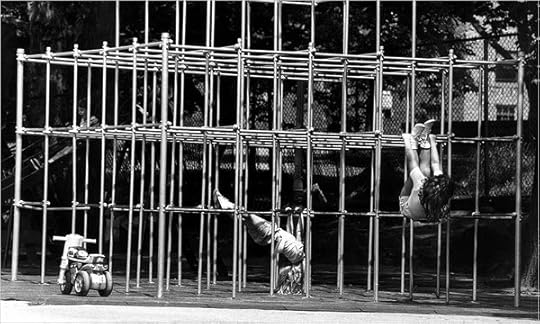Can playgrounds be too safe?
Companion piece: Why children need traditional fairy tales
From the New York Times, Science section:
Can a Playground Be Too Safe?
CHILDHOOD RELIC Jungle gyms, like this one in Riverside Park in Manhattan, have disappeared from most American playgrounds in recent decades.
By JOHN TIERNEY
Published: July 18, 2011LIVE AND LEARN A bad fall may mean a child is less likely to have a fear of heights later in life.
"I grew up on the monkey bars in Fort Tryon Park, and I never forgot how
good it felt to get to the top of them," Mr. Stern said. "I didn't want
to see that playground bowdlerized. I said that as long as I was parks
commissioner, those monkey bars were going to stay."
His philosophy seemed reactionary at the time, but today it's shared by
some researchers who question the value of safety-first playgrounds.
Even if children do suffer fewer physical injuries -- and the evidence
for that is debatable -- the critics say that these playgrounds may stunt
emotional development, leaving children with anxieties and fears that
are ultimately worse than a broken bone.
"Children need to encounter risks and overcome fears on the playground," said Ellen Sandseter, a professor of psychology at Queen Maud University in Norway. "I think monkey bars and tall slides are great. As playgrounds become more and more boring, these are some of the few features that still can give children thrilling
experiences with heights and high speed."
After observing children on playgrounds in Norway, England and Australia, Dr. Sandseter identified six categories of risky play:
exploring heights, experiencing high speed, handling dangerous tools,
being near dangerous elements (like water or fire), rough-and-tumble
play (like wrestling), and wandering alone away from adult supervision.
The most common is climbing heights.
"Climbing equipment needs to be high enough, or else it will be too
boring in the long run," Dr. Sandseter said. "Children approach thrills
and risks in a progressive manner, and very few children would try to
climb to the highest point for the first time they climb. The best thing
is to let children encounter these challenges from an early age, and
they will then progressively learn to master them through their play
over the years."Read more at the New York Times.
Barbara Curtis's Blog
- Barbara Curtis's profile
- 3 followers




